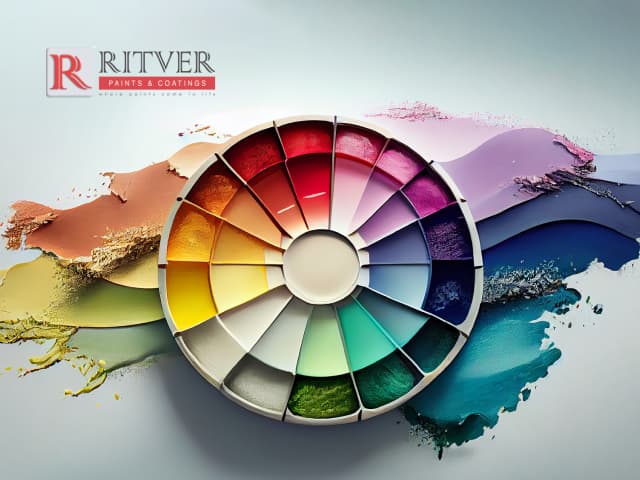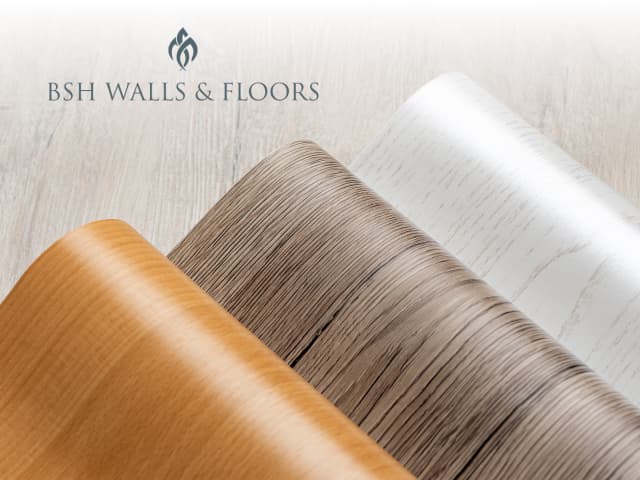Top 10 E-Commerce Website Designs to Inspire Your Online Store
The contemporary digital landscape is evolving rapidly, and exploring the top e-commerce website designs of 2025 reveals how innovation and storytelling shape online success. While we are entering into this digitally equipped world, design innovation, hyper-personalization, and technology integration are all becoming increasingly popular to be successful for online stores. The most successful e-commerce sites are now merging functionality with aesthetics, performance with creativity, and storytelling with strategy.
Through this blog, we will be exploring the top e-commerce website designs and the trends that can inspire your next digital transformation.
Why Web Design for E-Commerce Matters
Web design for e-commerce has become purely for performance and conversion. A contemporary and modern design should address multiple factors like intuitive UX, mobile responsiveness, AI-powered personalization, and rapid loading speed. Recent research has shown that 75% of users will be judging a brand’s credibility based on website design, and even a one-second delay in page load can reduce conversion by 7%.
Design has become the heart of businesses, where consumers expect an easy and user-friendly shopping experience. The top e-commerce website designs of 2025 are built not only for aesthetics but also for performance and conversion. With smart navigation, strong product storytelling, and frictionless checkout flows, which can ensure there is increased engagement and retention, web design can play a very creative role in conversion. As the market competition is intensifying, web design for e-commerce is becoming the ultimate differentiator by moulding not only how users shop but how they interact and feel about your brand.
The Design Trends Defining E-Commerce in 2025 and Beyond
As we are moving towards a futuristic digital landscape, e-commerce design is transforming to meet the demands of a more immersive, personalized, and efficient digital shopping experience. Key trends that are shaping this include:
- AI-Powered Personalization: Artificial Intelligence is now powering e-commerce platforms to dynamically adjust all stages of user experience, homepage content, navigation flow, product visibility, bundling, and pricing, all of which are based on user behavior and contextual signals. This shift will reduce friction, boost conversion, and increase customer lifetime value through automated relevance.
- Voice Commerce Becomes a Primary Transaction Channel: With smart assistance from search tools to transnational interfaces, customers are now expected to place orders, find deals, and complete purchasing using voice alone. This will enhance accessibility and manage the shopping process.
- Augmented Reality as a Default Product Experience: This is becoming the must-have for e-commerce categories where size, placement, and visual compatibility matter. Customers can preview items in their own space before purchasing, increasing purchase confidence and reducing returns.
- Sustainability Transparency: Consumers are increasingly seeking clear data on sustainability and sourcing. E-commerce platforms are responding by providing information on carbon footprints, fabric origins, and factory conditions, allowing customers to filter by sustainability attributes and choose eco-friendly shipping options.
- Hyperlocal Fulfillment: Same-day delivery is becoming more prevalent, relying on local inventory and automated fulfillment systems. This approach reduces logistics costs and lowers cart abandonment through reliability, particularly benefiting urban and high-volume retailers.
Most of the top e-commerce website designs share a common foundation: personalization, sustainability, and seamless user experiences. Every project by Element8 aligns with advanced web design trends; from minimal layouts and motion-driven storytelling to immersive product displays that keep users engaged and inspire conversions.
Top 10 Global E-Commerce Website Designs of 2025
The following examples of e-commerce web designs from around the world can show how design and technology can blend to create an easy, simple, personalized, and future-ready shopping experience for all. These examples can also show the leading e-commerce trends of 2025 and beyond, from immersive storytelling to AI-driven shopping journeys. Let’s look at some of the top e-commerce website designs across the globe that are redefining digital shopping in 2025.
- Allbirds: Sustainable Simplicity in Action
Allbirds champions an eco-friendly minimalism, which features a very clean layout, with soft neutral palettes, and ample white space. The design also focuses on storytelling and transparency by integrating sustainability badges and carbon footprint tracing. Its mobile-first structure can ensure effortless navigation, while micro-interactions can elevate the browsing experience.Some key features that make them stand out are eco-conscious design, minimal UI, transparent sustainability messaging, and a responsive product grid. - Apple: Immersive Visual Storytelling
Apple’s online store is setting a benchmark for immersive e-commerce storytelling. With bold imagery, fluid animations, and simple and easy product videos, Apple is curating emotional engagement before purchasing. AI personalization customizes the shopping experience by tracking product interests.And the key features that define them are high-definition visuals, video storytelling, AI-driven recommendations, and elegant micro-interactions. - Gymshark: Community-Driven Commerce
Gymshark’s design principle is community engagement, by blending social integration with contemporary, high-contrast aesthetics. The dynamic homepage will show real user content and live events by aligning perfectly with the brand’s fitness ethos.Key features making them the global icon for website design are UGC integration, dynamic visuals, responsive grid, and motivational storytelling. - Kylie Cosmetics: Personalized Luxury
The website clearly shows luxury minimalism and personalized UX. AI tools can suggest shades that are based on your preferences, while AR-enabled “try-on” features can bridge the digital and physical gap. It has a very smooth checkout flow, which enhances conversion.AR virtual try-on, AI-based recommendations, high-quality product imagery, and one-click checkout are some of the key features that make Kylie Cosmetics a global icon in web design. - Burrow: Interactive Furniture Shopping
Burrow is pivoting the furniture e-commerce with AR-powered previews and an intelligent configurator that can visualize furniture in real spaces. The site’s clean interface emphasizes comfort, with dynamic visuals and customization sliders that actually enhance engagement. - Nike: Hyper-Personalized Shopping Experience
Nike’s online store uses AI-driven personalization to deliver customized product recommendations, exclusive member content, and localized offers. The design is bold yet very minimal, focusing on movement, energy, and adaptive visuals.AI personalization, localized UX, micro-animations, and mobile-first layouts are some of the best key features the website holds. - Glossier: Conversational and Humanized Design
Glossier’s design embraces a human-centered shopping journey, using conversational microscopy, pastel color palettes, and authentic photography. Its layout feels approachable yet very premium, with simplified navigation enhancing user trust.Key features include minimal aesthetics, human tone, micro-interactions, and community-driven content. - Patagonia: Ethical Storytelling at Its Core
Patagonia integrates ethical storytelling into all its design elements. Rich visuals of nature, interactive sustainability sections, and transparent sourcing narratives make the website both inspiring and innovative.Story-driven content, eco-focused imagery, transparent design, and environmental call-to-action are some of the key features. - Casper: Sleep-Focused Digital Comfort
Casper’s e-commerce website uses very calming colors, soft animations, and friendly UI to reflect their essence of comfort. Its AI chat assistant will help customers find ideal products based on sleep habits and preferences.
The highlighted key features include an AI product assistant, calming color palette, minimalist UX, and clear CTA hierarchy. - Sephora: Smart Omni-Channel Integration
Sephora’s online platforms fill the gap in digital and in-store experiences with advanced personalization and AR makeup testing. Its data-driven design can ensure consistent branding across mobile, desktop, and physical touchpoints.
Key features include AR try-on, AI personalization, seamless omnichannel UX, and data-backed recommendations.
All these examples collectively show how the best e-commerce website design emphasizes personalization, ethical storytelling, speed, and interactivity. If, through AI-powered UX, sustainable storytelling, or immersive AR experiences, these brands can prove that e-commerce design trends in 2025 and beyond are not just about aesthetics, it is all about connection, relevance, and measurable performance.
Top 10 E-Commerce Website Designs by Element8 That Set the Standard for Digital Excellence
Here, we can explore some of the top e-commerce website designs, globally recognized examples, and projects designed by Element8, which can define excellence in user experience, performance, and aesthetics.
- Garmin
Garmin’s e-commerce platform provides a clean, data-driven design that emphasizes product clarity and interactive product exploration. Every section is being structured to support high user intent, with fast loading times and intuitive filters enhancing usability. - Hisense
Hisense platform integrates minimalist design with high-end visuals by offering users an immersive journey through product categories. The sleek UI and optimized navigation can reflect Hisense’s innovative brand identity. - Reem Prive
Reem Prive is the best example of how a luxury e-commerce site is done. It has an elegant interface with refined typography and immersive imagery, which can convey brand exclusivity while maintaining frictionless checkout experiences. - Spectra
The Spectra website features advanced filtering, bold product visuals, and an easy UX, which is designed for high conversion and speed optimization. - Maintive
An e-commerce experience that is built for professionals, Maintive’s platform uses strong product categorization and AI-driven performance enhancements for reliability and efficiency. - Jays Cakes
With a delightful visual and functional design, interactive menus, customized ordering, and vibrant photography, Jay’s Cake perfectly illustrates how storytelling and design can be done better for online engagement. - Oserth
With an elegant combination of artistry and usability, Oserth’s layout emphasizes a handcrafted product with visuals and an organic UX flow that syncs in with its brand ethos. - Gerbou
The Gerbou shows the local heritage through a modern, contemporary design by blending earthy tones, minimalist grids, and powerful brand storytelling, which is all optimized for mobile shopping. - Ritver
Ritver is a project that balances technical depth with design simplicity, offering intuitive navigation across a wide range of product categories while maintaining visual appeal. - BSH
BHS is a strong example of how design and technology should be integrated into a website design. The platform uses smart architecture and AI-enhanced search to simplify the product discovery journey.
These examples clearly show that Element8 can not only embrace global e-commerce trends but can also lead the regional digital transformation with design precision, UX excellence, and performance-driven results.
To explore design innovation further, see Element8’s insight on Top Web Design Trends shaping the digital world.
How to Design an E-Commerce Website That Converts
Visual appeal is not only the element that makes a successful e-commerce website; it is built on a foundation of strategy, psychology, and easy functionality. Let us look into how you can design an e-commerce platform that can attract, engage, and convert.
- Understand Your Audience: To understand customer journeys, demographics, and behavior, you can use AI-driven analytics. Personalize layouts and product suggestions accordingly.
- Simplify Navigation: Design intuitive menus, mega dropdowns, and sticky navigation bars, which can make exploration more effortless.
- Optimize Product Visuals: By incorporating AR/VR product periviews, you will get 360-degree spins and interactive zoom for immersive shopping experiences.
- Speed Matters: By using lazy loading, CDN integration, and AI-powered performance monitoring to maintain lightning-fast loading times, you can improve your website quality.
- Add Strong CTAs: By placing contextual CTAs like “Add to Cart”. “Try in AR, “Buy Now” at scroll-based trigger points can increase engagement.
- Integrate Social Proof: To build strong trust, highlight real-time purchase notifications, UGC galleries, and influencer reviews.
- Offer Multiple Payment Options: To enhance checkout convenience, add local gateways like STC Pay, Apple Pay, and Tabby.
With all these creative design ideas combined with behavioral insights, you can turn casual browsers into loyal customers.
Need help designing a modern e-commerce website? Talk to our design experts
Shopify Website Design Ideas for 2025
Shopify has been the go-to choice for modern e-commerce brands for all time, offering agility, scalability, and customization. By integrating AI and next-gen design tools, Shopify websites can now predict, personalize, and perform better than ever before.
Key trends shaping Shopify design:
- Personalized Homepages: Based on browsing and purchase history, AI can dynamically customize homepages
- Dynamic Checkout Experiences: To enhance covariance, integrate smart checkouts with one-click payments, saved preferences, and address autofills.
- Visual Storytelling: To communicate brand identities with clarity, incorporate scroll-triggered animations and immersive video banners.
- Modular Templates: For designers to test and deploy new layouts faster, add drag-and-drop sections.
- Voice Search Optimization: One of the new accessibility trends is voice-enabled product discovery.
- AI Chat Integration: Shopify stores are now embedding AI shopping assistants that can guide customers in real time.
- Sustainability Badges: Highlight eco-friendly practices to align with conscious consumer values.
Build your next Shopify website with Element8 — creative, fast, and conversion-focused.
E-Commerce Homepage Design Tips
Your homepage should be your digital storefront, the first thing that determines if the user should stay or bounce. An effective e-commerce homepage will educate, inspire, and drive action within seconds.
- Use Compelling Hero Banners: Feature trending products, seasonal campaigns, or AI-personalized recommendations.
- Visual Hierarchy: Maintain clean typography, whitespace, and contrast to highlight key CTAs.
- Highlight Trust Elements: Add customer testimonials, secure payment icons, and return guarantees above the fold.
- Create Seamless Flows: Ensure quick access to key sections like “Shop Now,” “Collections,” and “Cart.”
- Incorporate Micro-Animations: Small interactions like hover states or product motion effects can enhance engagement.
- Mobile-First Layouts: To optimize for m-commerce growth in 2025 and beyond, design with a mobile-first approach in mind.
- AI-Powered Personalization: Using predictive analytics, display recently viewed items or location-based offers.
- Accessibility & Inclusivity: To reach a wider audience, ensure there is color contrast, font legibility, and screen-reader compatibility.
A well-structured homepage blends design clarity with emotional appeal by telling your brand story while guiding users toward conversion.
How to Create an Online Store That Reflects Your Brand
To create an online store that feels authentic and credible, consistency is the main element. Every visual, word, and interaction must sync in with your brand’s tone and values.
You can start by defining your brand palette, typography, and messaging voice. And then integrate your design with intuitive UI/UX frameworks for smooth interactions. Element8’s website development expertise can make sure your digital touchpoint reinforces brand recognition.
When executed well, your e-commerce website becomes a living embodiment of your brand, which can be a digital space where customers connect emotionally, not just transactionally.
Let’s turn your online store into a sales machine — get a free design consultation
Designing the Future of E-Commerce with Element8
As e-commerce continues to grow and shape the global economy, 2025 marks a pivoting point where digital intelligence meets business strategy. The future belongs to the brand that prioritizes user experience, technological adaptability, and sustainability in its design philosophy.
As digital commerce is transforming, innovative brands are embracing technologies like Generative AI for E-Commerce to personalize their user experiences and facilitate an easy shopping journey; a philosophy that is deeply rooted and reflected in Element8’s approach to design and development.
As a top web design agency in Dubai, We have a firsthand experience of the impact a well-designed e-commerce website can have on redefining and driving business development. From responsive design and Shopify development to AI-driven optimization and SEO strategy, our team crafts e-commerce solutions that inspire, engage, and deliver measurable results.
Ready to design an e-commerce website that drives sales and sets trends for 2025?
FAQs
- What are some elements that make a good e-commerce website design in 2025?
Speed, intuitive UX, personalization, and visual storytelling, which are all optimized for mobile-first performance, make a great design. - How does a Shopify website design improve conversions?
Shopify simplifies user experience and journey with fast checkouts, secure integrations, and flexible templates designed for conversion. - Is e-commerce homepage design important for a brand’s success?
It is the first impression, to build trust and guide users towards key actions like browsing, adding to cart, or purchasing. - What is the estimated cost to design an e-commerce website in the UAE?
The cost of designing an e-commerce website in the UAE can be different depending on the features, scale, and customization requirements. On average, it can range between AED 15,000 to AED 80,000+, depending on the complexity, integrations, and platforms like WooCommerce or Shopify. - How to improve an e-commerce website’s user experience and sales?
To improve user experience and drive sales, focus should be on simplified navigation, optimized visuals, trust signals, and personalized recommendations. Incorporating data-driven design and AI-powered UX can be of help in creating a custom journey for all shoppers.










